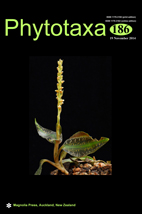Abstract
Sinalliaria is described here as a new genus of the family Brassicaceae from eastern China, based on the morphological characters and molecular sequences. Sinalliaria differs from the related genus Orychophragmus in having basal leaves petiolate, simple or rarely with 1‒3 lateral lobes (not pinnatisect); cauline leaves petiolate, cordate at base (not sessile, auriculate or amplexicaul at base); petals obovate to narrowly obovate, claw inconspicuous (not broadly obovate, with a claw as along as sepal); siliques truncate (not long-beaked) at apex. The microscopic characters of seed testa also show significant differences between Sinalliaria and Orychophragmus. Phylogenetic evidence from DNA sequences of nuclear ribosomal ITS and plastid region trnL-trnF indicates that Sinalliaria is a distinct group related to Orychophragmus and Raphanus, but these three genera do not form a clade. The new genus Sinalliaria is endemic to eastern China and has only one species and one variety. The new combinations, S. limprichtiana (Pax) X. F. Jin, Y. Y. Zhou & H. W. Zhang and S. limprichtiana var. grandifolia (Z. X. An) X. F. Jin, Y. Y. Zhou & H. W. Zhang are proposed here.

